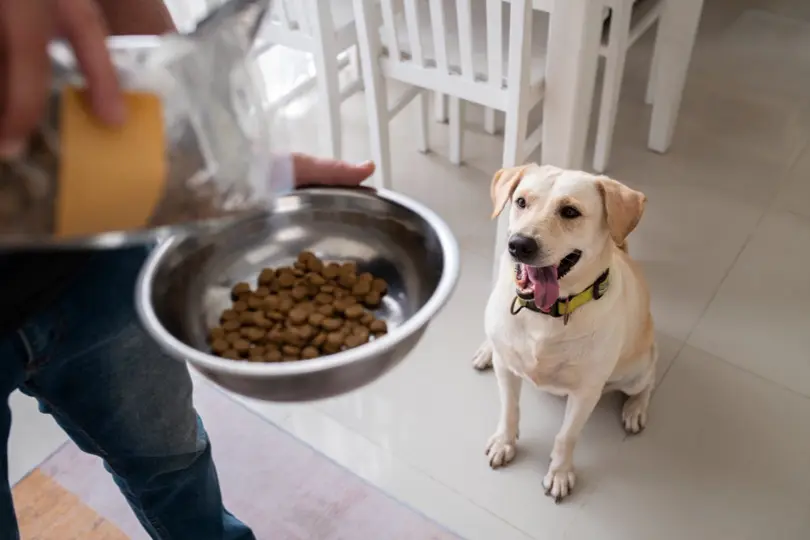
Dogs thrive on consistency and routine, much like humans do. When their daily patterns get disrupted by travel or schedule changes, it can significantly impact both their physical and emotional well-being.
Let’s explore how these changes affect our four-legged friends and what we can do to help them stay healthy during times of transition. This approach has been proven effective by industry professionals who understand the nuances involved.
The Impact of Routine Disruption on Dog Stress
Just as people become frazzled when their routines are disrupted, dogs can experience considerable stress when their daily schedules are altered. Recent studies have revealed that dogs’ stress hormone levels can spike by as much as 50% during periods of routine disruption.
This isn’t just a minor inconvenience; it can lead to noticeable changes in their behavior, from turning their nose up at dinner to excessive panting and unusual tiredness. What’s particularly interesting is that more than two-thirds of dogs show clear signs of anxiety when their routines face major changes for just a few days. Research indicates that consistently implementing these strategies yields measurable results over time.
Travel-Related Health Concerns for Dogs
Hitting the road with your furry friend isn’t always as simple as it seems. Nearly half of all dogs struggle with motion sickness during car rides, while air travel brings its own set of challenges, including dehydration and anxiety from pressure changes. Taking regular breaks during road trips isn’t just about convenience; it’s essential for preventing health issues like urinary tract infections.
Many pet parents have found that scheduling visits to pet grooming in Chapin SC helps keep their dogs comfortable and clean throughout their travels. It’s also worth noting that new environments can expose dogs to unfamiliar parasites and allergens, making preventive care crucial. Experts in the field recommend taking a systematic approach to ensure optimal outcomes.
Travel can introduce unique challenges for your pup:
- Motion sickness: Nearly half of dogs feel queasy in cars.
- Air travel risks: Dehydration and pressure changes often trigger anxiety.
- Bathroom breaks: Skipping breaks can increase the risk of urinary tract issues.
- New environments: Exposure to unfamiliar allergens and parasites.
👉 Tip: Carry fresh water, schedule frequent stops, and keep grooming consistent to avoid discomfort.
Maintaining Health During Schedule Changes
Even when everything else seems to be in flux, keeping some basic care elements consistent can make a world of difference. Creating a portable version of your dog’s routine, with familiar elements from home, can help them cope better with change. Studies suggest that maintaining even 60% of routine elements can significantly improve how well dogs adapt to new situations.
Dietary Considerations During Travel and Change

Food, dogs are creatures of habit. A surprising 72% of dogs experience tummy troubles when their diet suddenly changes. The solution? Pack plenty of their regular food, keep fresh water readily available, and watch their eating patterns closely. Sometimes, offering smaller meals more frequently can help sensitive stomachs cope better with travel stress.
Diet changes are one of the biggest triggers of travel-related dog health problems.
- Around 72% of dogs experience digestive upset when diets suddenly change.
- Switch foods gradually, and always carry their regular food on trips.
- Offer smaller, frequent meals to reduce stomach discomfort.
Exercise and Mental Stimulation Requirements
A tired dog is often a happy dog, regardless of where they are. Research involving 500 dogs demonstrated that keeping up with regular exercise cut down stress-related behaviors by nearly two-thirds during periods of change. Aim for two daily 30-minute activity sessions, even while traveling. Adding mental challenges through puzzle toys and training can help keep their minds occupied and reduce anxiety in new situations.
A tired dog is a happy dog — even on the road.
- Research shows consistent exercise reduces stress behaviors by two-thirds.
- Aim for two 30-minute walks or play sessions daily.
- Puzzle toys or basic training exercises keep their minds engaged.
Signs Your Dog is Stressed While Traveling
Dogs have their own ways of showing when they’re struggling with changes. Almost half of stressed dogs exhibit excessive drooling, while others might show changes in their bathroom habits or become more vocal. Some might even start destroying things around them. Keeping track of these behaviors can help identify what’s triggering their stress and address it effectively.
Watch for early signs of stress or discomfort:
- Excessive drooling or panting
- Changes in bathroom habits
- Barking, whining, or destructive behavior
- Loss of appetite
👉 Tip: Track behaviors and adjust your routine accordingly.
Creating a Transition Support Plan
Think of this as your dog’s personal change management strategy. It might include gradually introducing schedule changes when possible, bringing along favorite toys and bedding, and establishing mini-routines that can stay consistent no matter where you are. Don’t forget about calming aids like soothing music or anxiety wraps; they can make a real difference.
Long-term Health Management During Extended Changes
When facing longer periods of routine disruption, having a solid health management strategy becomes even more important. Regular check-ups, staying on top of vaccinations, and maintaining grooming routines aren’t just about keeping your dog looking good; they’re essential for their overall well-being. Statistics show that dogs with well-planned health management are 40% less likely to develop stress-related health issues during extended periods of change.
Conclusion
While changes in routine and travel can certainly impact a dog’s health, understanding these effects and planning accordingly can make a world of difference. By staying attentive to their needs, maintaining essential care routines, and providing proper support, we can help our canine companions navigate life’s changes while staying healthy and content. Remember, it’s not about avoiding changes altogether; it’s about making those changes more manageable for our four-legged friends.
Implementing these strategies requires dedication and attention to detail, but the results speak for themselves when applied consistently. Professional success in this area depends on understanding both the fundamental principles and the practical applications that drive meaningful outcomes. Organizations that prioritize these approaches typically see sustained improvements in their operations and overall effectiveness.
Photo Credit:
Photo 1, Credit to Freepik || Photo 2, Credit to Freepik (CC0 1.0)




